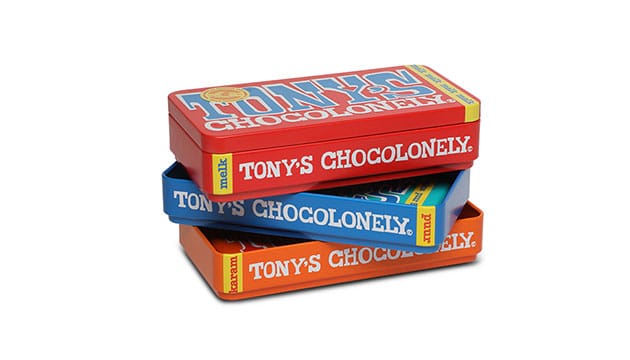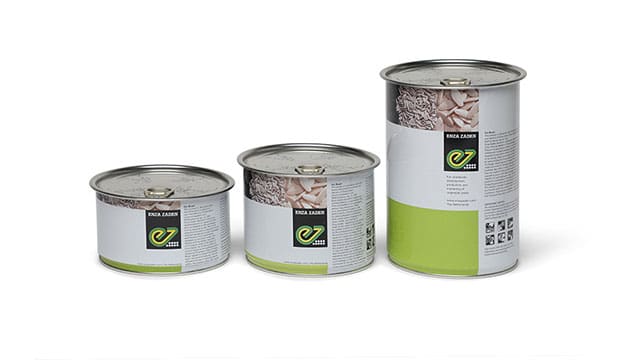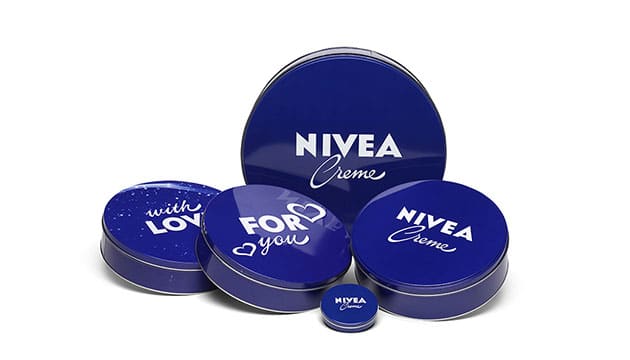Our history
We are happy to take you into our history and look back on more than a century of prosperity, tough times, resilience and the ability to be innovative all the time. A timeline from 1907 to the present. 1907 to 1937
Franciscus Kriek, first generation
1907 – Franciscus Wilhelmus Kriek starts as a tinker for herself in Krommenie.
1912 – Start of the traditional tinker shop on the Vermaningspad in Krommenie (including cigar boxes).
1919 – The canning shop is mechanized and the workforce expanded. Sons Martinus and Johannes Kriek join the company. Start of production of buses for the paint industry.
1924 – Start manufacture of square biscuit tins and export tin can packaging for the confectionery industry.
1928 – The workforce of ‘Zaanlandia can factory’ will be expanded to 20 employees.
1932 – The range is expanded with chemical cans, wash cans and tins for bakery products.
1937 – 1962
Martinus en Johannes Kriek, second generation
Despite housing shortage and material scarcity, the post-war period brought about a strong growth of the tin industry. In the first few years, people had to be inventive by reusing the can of large buses themselves and, for example, using the truck with a wood gas generator in the absence of electricity. Manual soldering was largely automated. The company tried to capitalize on the experience gained during the war by establishing a cardboard company.
Jan Kriek came into the picture in 1953 at the age of eighteen in the company that was run by his father and uncle. Hardly three years later, his father Johannes died suddenly, while the factory faced a major expansion. The death caused tensions in the family. Uncle Martinus only had daughters and Jan automatically became the successor. He had wanted to become a sports teacher, but he thought he couldn’t just leave the family business.
Jan worked for years under his uncle Martinus and his son-in-law J. Smit. The factory regularly supplied many tins to the Linoleum Factories in Krommenie in the late 50s and 60s. The Krieken, therefore, invested in an automatic line for rectangular buses. An investment that they never saw back, because linoleum lost a low-maintenance floor covering.
1937 – M.F. and J.F. Kriek took over the company from their father. There are now 25 employees.
1941 – Because of the war, a switch is made to the processing of cardboard (jam lids). Emergency heaters are also produced.
1946 – Takeover of Victory cardboard factory.
1953 – J. Kriek joins the company that is growing steadily.
1962 – 1999
Jan Kriek, third generation
In 1962 Jan takes over the company from his uncle Martinus. The 60s and 70s brought major social and technical changes. The packaging industry switched to cardboard, paper and plastic. Producers of paints, oils and fats gradually switched to plastic packaging. Zaanlandia opened up a new market with the production of buses for smoke bombs, depth bombs and tear gas pots. The company also focused more on producing small, special series. The idea was that survival was only possible by concentrating on the exclusive work.
Zaanlandia took over various companies in the 1980s. At first it was about expanding production lines and acquiring new customers, but with the acquisition of the Achterhoek company Widow J. Bekkers (1987), it was about broadening the range. That company focused primarily on the promotional (food) market and produced high-quality decorative tins. Under the name Zaanlandia Bekkers Blik, there were many more technical and creative options to meet the ideas of customers.
The 90s are characterized by the award of various important prizes in the packaging world. Jan’s son Daan is listed with the Guinness Book of Records when he enters. Jan opens a new office in Krommenie and lets Daan initiate a series of changes that sometimes went faster than he wanted. Daan is also starting to look across the border.
1962 – J. Kriek takes over the company. ‘Zaanlandia Blik’ now has 45 employees.
1963 – New automated production lines make capacity expansion possible.
1968 – Zaanlandia Bekkers Blik develops the plastic screw closure for tin packaging and is the first to market it. It wins the ‘The silver nut’ packaging prize.
1970 – The factory is being expanded further and is developing in the direction of ‘special products’. At the same time, a few small can manufacturers are taken over.
1972 – The range is expanded with printed tin packaging for the tobacco and confectionery industry.
1978 – The range is expanded with printed tin packaging for the coffee and tea industry.
1982 – Celebrating 75th anniversary of Zaanlandia Blik B.V. Receipt of silver medal FME / CWM.
1987 – The Widow J. Bekkers company in Wehl is taken over. This will be the second factory.
1991 – The transport can with plastic screw cap for radioactive material wins the packaging prize ‘The silver nut’.
1992 – The transport can with plastic screw cap for radioactive material wins the ‘Eurostar for packaging’.
1994 – The range is expanded with printed tin packaging for promotional gifts and promotional activities.
1995 – Daan Kriek joins the company. The Guinness Book of Records incorporates the largest view in the world made by Zaanlandia Bekkers Blik.
1996 – Opening new office in Krommenie.
1999 – present
Daan Kriek, fourth generation
The production speed had to be reduced from 6 to 8 weeks to 2 or 3. The speed of quotation and the speed of the production lines in the factory therefore had to be increased. Marit, Daan’s sister, was originally supposed to stay for one year, but in the end she worked for Zaanlandia much longer. She was a very good sparring partner, certainly with regard to the change process the company had ended up in. She mainly focused on marketing and sales. Thanks to its creative approach, the ability to think proactively and to put ideas to customers, Zaanlandia was transformed from a production-oriented to a market-oriented company.
The challenge of low-wage countries also had to be met. Zaanlandia invested heavily in the search for alliances with cheaper producers in Europe and Asia. Since then, the range has been expanded infinitely. Another radical change was the integration of widow J. Bekkers from Wehl within the Krommenie location. This reduced costs and more effectively deployed knowledge of can production.
1999 – Daan Kriek takes over the company from his father. Celebration 175-year anniversary Wed. J. Bekkers B.V. Receipt gold medal FME / CWM. Start of trade channel with Asian and European can manufacturers.
2001 – The new fully automatic welding line that makes airtight can packaging opens up a new sales channel: the agricultural seed market.
2002 – Factories Wed. J. Bekkers in Wehl is closed. Machines from Wehl are being moved to Wormerveer and a number of employees are coming along. After the merger, the company is called Zaanlandia Bekkers Blik B.V.
2003 – Zaanlandia Bekkers Blik takes over Hillegers Metaalwarenfabriek from Zwanenburg.
2004 – Expansion of machinery with the purchase of a conical tin line for the automotive sector. Glass cans for car windows and panoramic roofs are now also being produced.
2005 – Establish trade channel with Asia.
2007 – Celebration of 100th anniversary of Zaanlandia Bekkers Blik. H.K.H. Queen Beatrix grants the predicate Royal supplier.
2010 – Purchase of factory premises (2,000 m2) in Wormerveer by Zaanlandia Blik that was previously owned by mrs. M.W. Kriek (mother of Daan).
2011 – Expansion of Wormerveer factory building to 3,000 m2 and full transfer from factory in Krommenie to Wormerveer. From that moment there is only one production location.
2014 – Obtained BRC Packaging-certificate with AA status.
2015 – Investment in high-speed welding line for growing vegetable seed market.
2018 – Expansion of machinery with fully automatic cutting line.
2019 – Expansion of machinery with the palletising robot.


